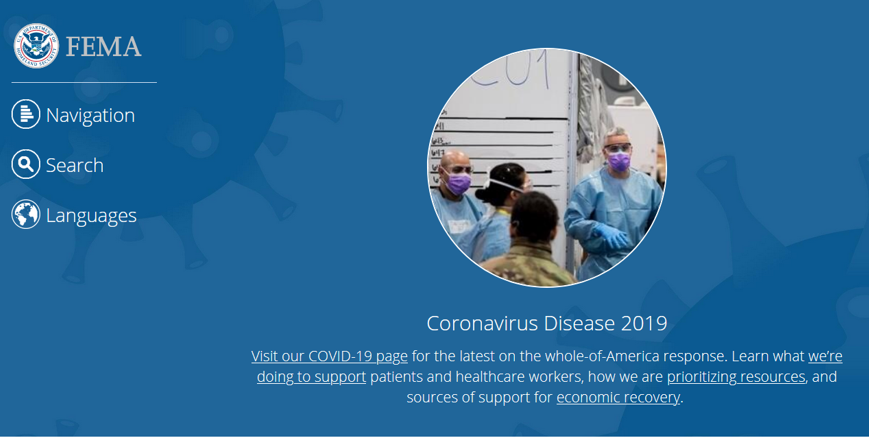 Loading... Please wait...
Loading... Please wait...BLOG - Infection Prevention
PPE Hood To Protect Healthcare Workers from Coronavirus Infection
Posted by Dr. De-Sheng Tsai on 19th Apr 2020
In 2014, the incidents of several nurses in Texas contracting the Ebola virus while caring for infected patients raised tremendous attention on healthcare workers safety. A high-profile project “Fighting Ebola: A Grand Challenge for Development” (to design improved PPE for protecting healthcare workers on the front lines) was launched as a partnership among the U.S. Agency for International Development (USAID), the Centers for Disease Control and Prevention (CDC), the White House Office of Science and Technology Policy (OSTP), and the Department of Defense (DOD). The project was said to call on the global community to share pioneering ideas that deliver practical and cost-effective innovations in a matter of months.
In the recent Covid-19 epidemic, nurses and doctors are getting infected. This time, by the hundreds. It is too convenient to place blame on the shortage of PPE; but, that does not acknowledge the lack of progress in improving design of conventional PPE over the last six years.
Here is the problem:
“Primary Head Protective Hoods” has been the critical component missing in conventional PPE.
Take a look at the photo on current FEMA homepage amid Covid19 pandemic. It obviously does not make sense that our healthcare workers fully cover their bodies in protective gear but leave their heads, faces, and necks totally exposed!

The lack of proper (practical, economical, and convenient)PPE hoods has been a problem in many industries. Fundamentally, there was no suitable material available for making head coverings that conformed to the contours of the wearer’s head and face. Because the materials were stiff, the head coverings (such as nonwoven and Tyvek hoods) had to be made baggy to cover different head sizes. Not only did that create too much gapping to provide an effective barrier, they also did not fit well even when incorporated with elastic components.
Coverall hoods are a common alternative; however, they quickly tire the wearer because of restricting head movement and mobility. They have been prohibited in confined spaces and on high structures. CDC guidelines also recommended that healthcare workers wear coveralls without an incorporated hood. PAPR hoods are excellent for covering the entire head; however, PAPR systems are expensive and they are inconvenient/cumbersome for many routine jobs. Further, the decontamination after each use is an additional tedious job.
Consequently, healthcare workers are left (or elect) to expose their heads and faces in infection-risk environments during their daily jobs.
I am the scientist who invented Latex-free Elastic Nonwovens. My Elastic Nonwoven Fabrics are the long-awaited breakthrough materials that give an elastic structure while maintaining the breathability and barrier functionality of nonwoven fabrics (which are commonly used for making surgical and N95 masks). The elasticity enables the making of protective apparel that are form-fitting on the wearer and becoming an isolation layer next to the skin.
The Latex-free Nonwovens Elastication Technology are co-patented with DuPont. There is no parallel technology and no similar or lower cost elastic material. DuPont Engineered Elastic Nonwovens™ made their debut at the 2007 IDEA Conference and were creating many successes before the 2008 economy collapse. VitaFlex LLC was established to continue the project of elastic nonwovens. In addition to processing elastic nonwovens, a proprietary converting method was added to manufacture soft-stretch hoods from the elastic fabrics.
Multi-functional Fabrics for Protective Hoods: Treating a piece of woven textile for multiple functionalities is difficult, if not impossible. However, by bonding individually treated elastic nonwoven fabrics into multi-layer structures, protective apparel can be economically made with various combinations of functionalities while maintaining a comfortable, soft form-fit and easy breathability. We have applied this concept in manufacturing a series of soft-stretch hoods (Dust Hoods, Spray hoods, UV Hoods, and BioSafety Hoods) to meet the safety requirements of various industries.
VitaFlex’s Biosafety Soft-stretch hoods are a successful example of an innovative PPE for primary head protection with proven marketability and quality superiority. Although there is no regulation or requirement for head coverings certification from any agencies,the FDA guiding principles for surgical masks were followed throughout the development process.
Our Biosafety Soft-stretch hoods are an innovative PPE engineered for blocking micron-sized particles, viscous fluids, and liquid splashes. Our hoods have been useful for stopping short-distance and contact transmission in infection-risk environments and praised by doctors and nurses in many hospitals including several VA medical centers.
The innovative advantage of our Biosafety Hoods is “Comfort”:
- Soft Form-fit to securely cover the entire head, face, and neck without restricting peripheral vision, head movement, and wearer’s mobility.
- Easy Breathability to keep the head cool for extended wear.
Our hoods are replacing facemasks in many low-risk work environments. They can also be worn under a mask or a full-face respirator to keep the entire head covered while providing an additional layer of isolation and a soft cushion of comfort and to reduce gaping from respirator movement due to work or sweat.
Without our Biosafety Hoods, personnel are not prepared for and are vulnerable to epidemic outbreaks or disasters. However, “Primary Head Protection" or "PPE Hoods” is not a product category or product name found in the current FEMA, federal or states procurement systems. Consequently, we have been unable to list our hoods and make them available to emergency responders.
